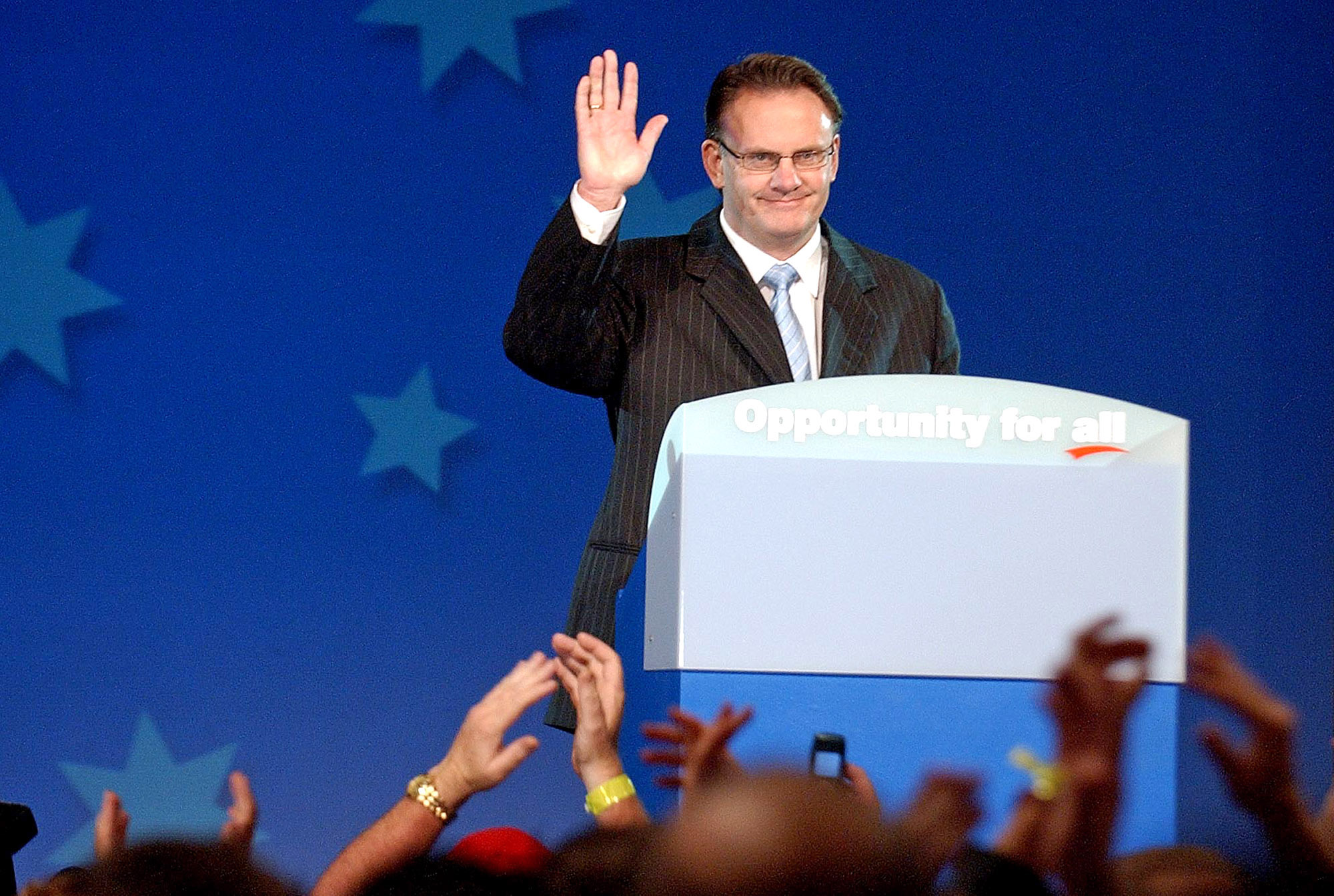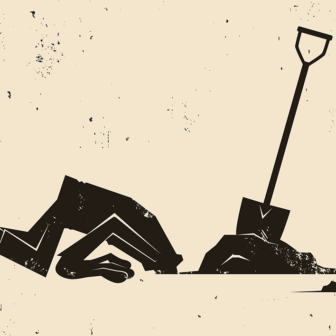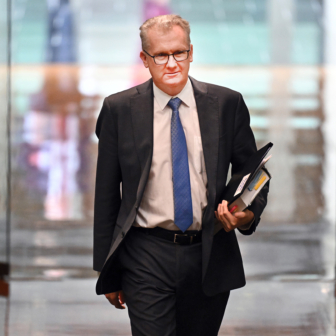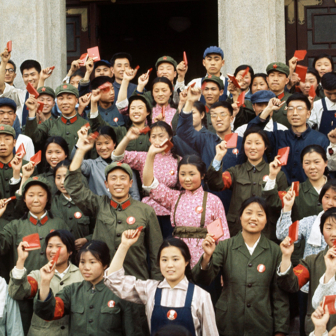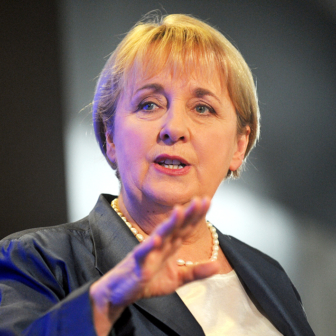The competition between Australia’s two major political parties has two characteristics that encourage divisive rhetoric. As a zero-sum game, it doesn’t allow for mutual advancement or compromise; one side improves its prospects only at the expense of the other. As a winner-take-all game it creates an absolute chasm between the perks and opportunities of government and the frustrations and irrelevance of opposition. Competitions of this kind are not conducive to a strong sense of fair play. A “whatever it takes” attitude is preferable to a noble loss.
The opposition, whether Labor or Coalition, has no incentive to acknowledge the constraints faced by all governments or the intractability of the problems they must deal with. Rather, it will promote a simple equation: the government is always to blame; the solution lies simply in changing governments. As presidential candidate Richard Nixon declared before the 1968 US election (another two-horse race), “There is nothing wrong with this country that a good election wouldn’t fix.”
Governments usually have the upper hand in this face-off simply because their actions matter. Their ability to act — and thus shape the news agenda — is far from total, but nor is it insignificant; oppositions are often reduced to reactive, secondary roles. On occasions of national tragedy or triumph, governments can embody national unity; oppositions are reduced to irrelevance.
Given that governments have so many more opportunities to influence news coverage in normal political times, it might be thought that election campaigns are an opportunity for oppositions to have more impact. Suddenly the news coverage is much more evenly split.
Look at Australia’s last twenty elections, though, and the evidence is much more mixed. The chart below groups those elections according to where oppositions stood at the beginning of each campaign and how they fared at the ballot box. (My assessment of the pre-campaign state of the parties is based on a mix of poll watching and pundits’ forecasts.)
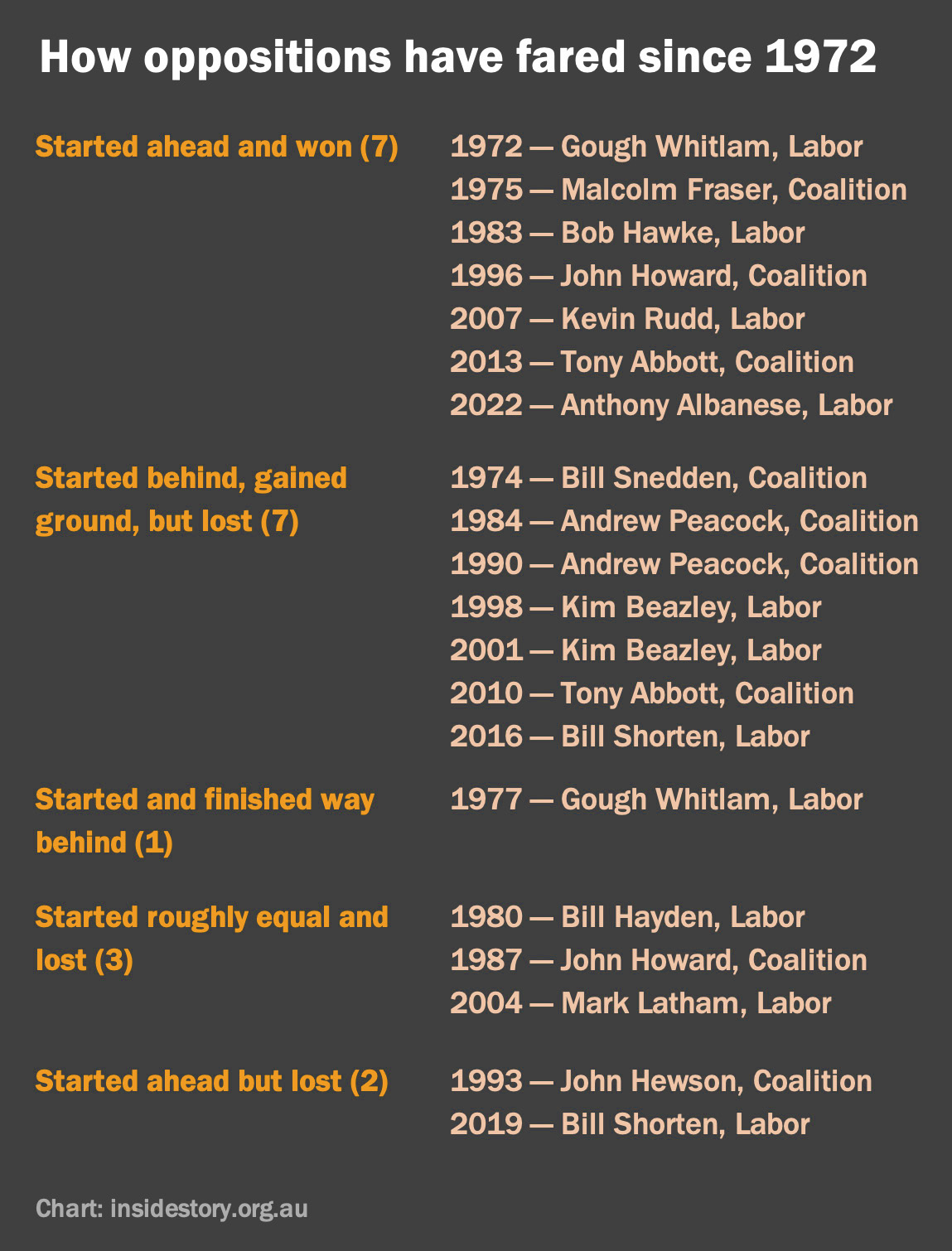
Started ahead and won
The most striking feature of the chart is that oppositions have only won government if they were already ahead when the campaign started. Barring some extraordinary development, the government’s fate was probably sealed before the campaign began.
When the Keating government faced the voters in 1996, Queenslanders were “sitting on their verandas with their baseball bats,” in the memorable phrase of former premier Wayne Goss. Before the 2007 election journalist Peter Hartcher described “[opinion] polls of chilling steadiness and deadly intent” signalling the imminent defeat of John Howard’s government. In campaigns like these it was less important for the opposition to gain the advantage than for it hang on to the lead it already had.
In each of the seven “started ahead and won” cases the win was decisive. The victors had a two-party-preferred share of 52 per cent or more and all but one attracted a two-party-preferred swing of three points or more. (The exception was Whitlam’s 1972 swing of 2.5 per cent, but it came on top of the very large 7.4 per cent swing at the previous election.) Changes of government in Australia have tended to reflect a marked long-term shift in support.
The oppositions’ roads to success, however, were varied. All party political campaigning is a mix of positive and negative, of what parties present as attractive about their own side and what they portray as terrible about the other. But the mix and emphasis is hugely variable, and the seeds of success are far from predictable.
In both 1975 and 2013 disillusion with the incumbents was so great that the key to success simply involved keeping the public focus on the government’s flaws. When neither party achieved a majority after the 2010 election, Tony Abbott realised “an election might be only a heart attack away,” wrote journalist Laurie Oakes, and “embarked on a permanent campaign. His strategy was for the opposition to attack, oppose, provoke, block, sling mud, stir up anger, and generally make as much noise as possible, in the process creating an impression of disorder and instability.” With the 2013 election in his sights, Abbott became renowned for his three-word slogans: “axe the tax,” “repay the debt,” “stop the boats,” “stop the waste” and “open for business.”
Recognising oppositions’ relentless focus on governments, political jargon now commonly refers to big-target and small-target campaigns.
Coalition treasurer Peter Costello’s staffer Nikki Savva thought Labor mounted a small-target campaign against John Howard’s government in 2007: opposition leader Kevin Rudd “looked like he could be Howard’s son, sounded like Howard, and did everything he could to encourage comparisons with Howard.” She believes “the electorate was looking for a younger version of Howard.”
Perhaps. But was also true that Rudd, unlike Howard, was a Mandarin speaker with a long interest in Asia who declared that climate change was the most urgent moral question of our time, promised to roll out broadband, promised to withdraw troops from Iraq, was a republican and wanted a much higher priority given to childcare.
Rudd’s success came less from being a “small target” than from choosing the right battles and putting the focus on to areas where the Howard government was weak and a strong constituency existed for change. Although the phenomenon is very difficult to research, winning the agenda battles is a central part of successful campaigning.
Started behind, gained ground, but lost
Of the seven elections in this category, five involved governments making their first bid for re-election — as Labor will next month. In every case the government survived, but invariably with a smaller share of the two-party vote.
The two oppositions that came closest to winning were Tony Abbott’s in 2010 and Kim Beazley’s in 1998. Abbott’s opposition reduced Gillard to minority government, forcing it to depend on a handful of crossbenchers to maintain a parliamentary majority. Not coincidentally, that election followed the first-ever overthrow of a leader who had won government, namely Labor’s Kevin Rudd, and the bitter internal conflicts that followed.
In 1998 Beazley won the largest-ever share of the national two-party vote that failed to deliver government (51.1 per cent) because of the distribution of Labor votes. He campaigned strongly on education and made a full-scale attack on the Coalition’s mooted GST, but John Howard’s Liberals hung on in the marginal seats.
No other government has entered an election campaign as complacently and arrogantly as Labor prime minister Bob Hawke’s did in 1984. Full of confidence amid a recovering economy, buoyed by Hawke’s record approval levels and endorsed by most of the nation’s newspapers (a first-ever for Labor), the path to victory seemed wide open. Even during the long campaign, few commentators saw any sign that Andrew Peacock’s opposition was gaining ground. But over the course of seven weeks, during a campaign called early for no apparent reason beyond expedience, some voters might well have decided to punish the government for its arrogance.
Before the 1990 election, with Andrew Peacock once again opposition leader and Hawke still in the Lodge, the Coalition was trailing badly. Internal conflicts, especially between John Howard and Peacock, had spilled into public, and Hawke responded with a telling attack line: “If you can’t govern yourselves you can’t govern the country.” Nevertheless, Peacock made considerable ground during an election that finished in a virtual tie, with the Coalition on a two-party-preferred 50.1 per cent.
Labor’s loss in 2001, on the other hand, was unique in several ways. For two years after Beazley came very close to winning in 1998, Labor looked likely to take government at the next election. Then, in 2001, came the sharpest change in the political climate during this half century. First came the Tampa, a Norwegian tanker that had rescued asylum seekers and sought to give them safe landing in Australia — a request John Howard’s government refused. Howard’s declaration that “We will decide who comes to this country and the circumstances in which they come” became a theme of the Coalition’s campaign.
Whether or not that would have succeeded by itself, al Qaeda’s attacks in New York and Washington brought global attention to the threat of terrorism and changed Australia’s political debate even more sharply. Polls showed a strong swing back to the government. After the election was called, Beazley managed to win back some of the lost support, and on voting day Labor managed 49 per cent of the two-party vote.
Started and finished way behind
What made the 1977 election unusual is that Gough Whitlam was the first leader since Labor’s Ben Chifley in 1951 to contest the next election as opposition leader after losing office as prime minister (and it’s safe to predict he will also be the last). He was leading a bitter, divided and disillusioned party, and Malcolm Fraser’s Coalition government was still able to campaign on perceptions that his administration had been a shambles. One potent Liberal Party advertisement had the song “Memories” playing over negative headlines from the Labor years; another called Whitlam the unemployment expert. The result was a loss almost as big as Labor’s thrashing in 1975.
Started roughly equal and lost
The old adage that oppositions don’t win elections, governments lose them, has plausibility for two reasons. If the public is happy then voters are likely to opt for the status quo, and so deliver the incumbents victory again (though happy publics seem to be in scarcer supply than they used to be). And with their news-generating advantages over oppositions, governments have much more scope to influence the political agenda.
The central flaw in the adage is that elections involve a preferential rather than an absolute decision. If an opposition is not seen as a viable alternative then an unpopular incumbent may survive simply as the lesser of two evils, or the most palatable among a limited menu.
What the “started roughly equal and lost” elections have in common is that opposition support went backwards rather than forwards during the campaign. All were elections the government could well have lost but the opposition wasn’t good enough to win.
Bill Hayden’s Labor opposition was ahead in the polls and looked likely to spring a surprise. The Fraser government sought to portray him as weak (a “sissy,” said deputy prime minister Doug Anthony). The last week and a half of the campaign was dominated by charges that Labor would introduce a wealth tax taking in the family home. Labor seemed unable to reclaim any political initiative. Although it eventually secured a two-party-preferred swing of 4.2 points, Fraser held on to government with a small majority based on a two-party-preferred vote of 50.4 per cent.
In 1987, the Labor government was facing difficult economic circumstances. But by mid-year, renewed disunity within the Coalition had begun to shift voters back to the government. Apart from Peacock supporters, opposition leader John Howard was also having difficulties with the Queensland premier’s “Joh for PM” right-wing populist insurgency. Howard’s promises of tax cuts and reduced public spending, painted by the government as a threat, became more controversial as major errors in the figures were revealed.
In 2004, with Howard now in the lodge, the Coalition government was attempting its fourth election victory in a row. Like all long-governing parties, it had accumulated scars and liabilities. Mark Latham had replaced Simon Crean as opposition leader in late 2003, and for the next several months seemed to be making progress — so much so that Labor was ahead in the polls when Howard called the election. During the campaign, the Liberals concentrated on what they saw as Latham’s lack of experience and lack of reliability. Their advertisements, which featured a capital L for “learner” whenever his name was mentioned, sought — very successfully — to contrast their economic management credentials with his.
In each of these cases, the government and opposition appeared to have roughly equal chances of winning at the outset of the campaign, and in each the opposition wilted under media scrutiny and shrewd campaigning by the government. This was even more starkly true of the final two cases in the chart.
Started ahead but lost
John Hewson in 1993 and Bill Shorten in 2019 were both seen as losing an “unloseable” election. In both cases, ambitious policy programs presented big targets for the incumbents. In 1993 the Labor government started the campaign a long way behind and drew ahead in the last days before the election. In 2019 it is more likely the polls had been wrong for some time.
As voters prepared to vote in 1993 they were still suffering from what Keating called “the recession we had to have,” and the polling showed both Labor and Keating, who had replaced Hawke as prime minister in December 1991, trailing by a considerable margin. A confident Coalition had proposed a GST as well as electorally risky changes to health and other social spending and employer-friendly changes to industrial relations laws. Labor operative and Keating confidante Peter Barron’s “brutal advice” was to “run on the GST alone.” Labor shouldn’t bother highlighting its own achievements but instead keep the focus on the opposition. The theme was captured in Keating’s memorable line in reference to the GST: “If you don’t understand it, don’t vote for it, and if you do understand it, you’d never vote for it.”
After Labor leader Bill Shorten came so close to victory in 2016, and after obvious conflict among the Liberals led to Scott Morrison replacing Malcolm Turnbull as prime minister, Labor consistently led in the polls during 2019. As the election approached, it put forward plans for tax reform, for increased spending in various areas, and for carbon emissions targets. Journalist David Crowe observed that Morrison was weakened by any reminder of the divisions in the Liberal Party: “The cabinet team was a liability. The Liberal brand was a problem. Morrison made the election a choice between himself and Shorten.”
The Coalition attacked on all fronts, claiming that Labor wanted to introduce an inheritance tax (described as a “death tax”) and that its proposed franking credits policy amounted to a “retirement tax.” Shorten became “the Bill Australia can’t afford.”
Barron’s conclusion was that Labor’s policies added up to “an accumulation of risk factors [and] the electorate hates risk.” He went on: “I don’t think they liked Morrison any more at the end than they did at the start. But I think they thought he was less risky.”
Among the twenty elections, these were among the clearest examples of scare campaigns, which are most commonly used against oppositions because they are more of an unknown quantity for the public.
At the last federal election, in 2022, Labor gained government with just 32.6 per cent of the primary vote, by far its smallest-ever winning percentage. Indeed, its first preference share was slightly lower (by 0.75 points) than the vote recorded three years earlier under Bill Shorten — almost certainly the first time a party has gained government despite a fall in its first-preference vote. At just 68 per cent, the combined major-party vote reflected a long-term trend towards minor parties and independents. Rather than Labor picking up the nineteen seats lost by the Coalition, the Greens and independents won ten between them.
This long-term decline in first-preference votes for the major parties shows no signs of going into reverse. Perhaps it is a symptom of how the old two-sided winner-take-all competition is ill-suited to the much more complex political environment we now inhabit. Perhaps, too, the trend towards negative campaigning has contributed to growing public cynicism about and distaste for the major parties. What might be best for advancing immediate party interests might not be best for maintaining longer-term confidence.
In the 1980s fewer than one in ten votes went to candidates outside the two major parties. In 2022 the figure was just under one in three, and it is likely to be close to that high again. The patterns of gains and losses in the last twenty campaigns are suggestive, but equally this secular trend away from the major parties is a stark reminder that the political present and future are not simple extrapolations of the past. •
This article is adapted from Rodney Tiffen’s essay in The Art of Opposition, edited by Scott Prasser and David Clune (Connor Court, 2024).
